The question was first raised at the end of the 17th century, when the slave’s original name was invalidated and replaced by the name given in baptism. This denial of the slaves’ identity and their presence in their ancestral origins and parentage came to characterise the process applied by the colonial powers and became systematic during the legal, then the illegal, slave trade.
It was not until 1848, when the former slaves were listed in the emancipation registers, with indication of parentage and ascendancy, that the family situation of the slaves and thus their humanity was recognised.
In any society, the family structure lies at the basis of social organisation, ensuring its perennial character, which is the permanent linguistic and cultural vehicle.
On this basis, far from denying the importance of the role played by the slave family, it is necessary to understand how it was formed and the essential role the family played as regards opposition and resistance to various political, economic and religious powers, by which it was denied, belittled, scorned and often ignored.
The Creole slave population increased from just several units around 1670 to 40,000 in 1848. This phenomenon quite simply meant that the slaves who were brought in had descendants, as did the latter, over a period of almost 150 years. A family structure thus existed over this whole period and it is appropriate to define it.
Abortion, used in all human societies, was officially forbidden; the use of plants and infusions was undoubtedly a means of regulating births, both for the Whites and the slaves. But ordinary practice was essential for ensuring continuation of lineage and thus becoming an ‘ancestor’.
The high proportion of Creole slaves, in spite of the slave trade, officially until 1817 but in reality until the 1830s, reflects the attachment of slaves to the notion of family.
The slaves who were victims of the slave trade, with the exception of the early years of the East India Company, were of parents unknown to the masters, for whom this was of no concern; these slaves sometimes married and always died as sons and daughters of nobody. However, until they arrived on Bourbon island, they all had ancestors and a patronymic, which normally placed them within a lineage.
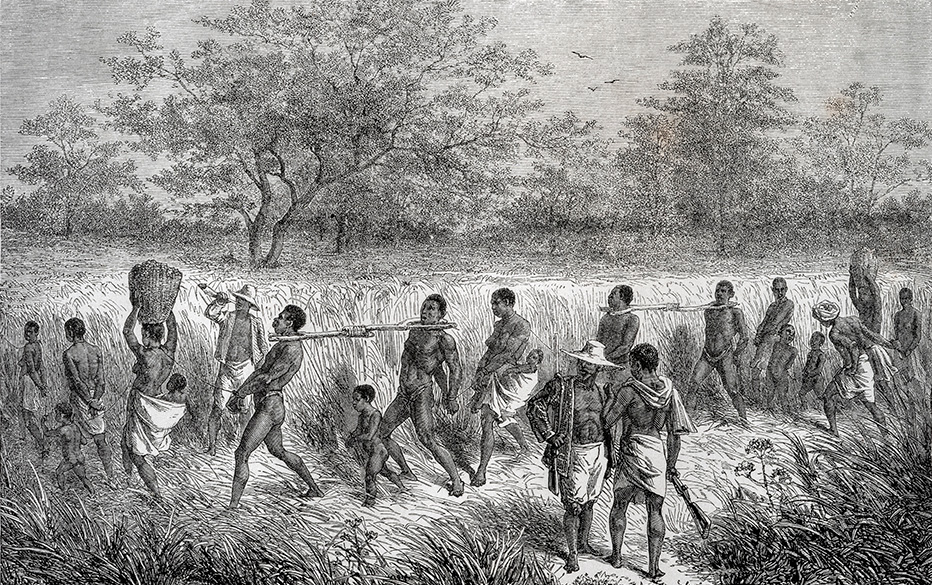
The slave is in general defined as being the antithesis of lineage. The system and ideology of slavery were based on absence of a lineage for the slaves, considered as movable goods and deprived of social and family identity. According to Selon C. Meillassoux : “Through being captured, they were uprooted from their original society and desocialised. Through the way they were inserted into the society where they arrived and the relation they had with their masters, they were then decivilised and depersonalised, even desexualised.”
For H. Gerbeau , there was obvious loss of identity and of being part of a lineage: “Mothers separated by force from their children often lose the desire to eat. Being uprooted from the family village creates a well of solitude within the stomach where ancestors and descendants will be drowned.”
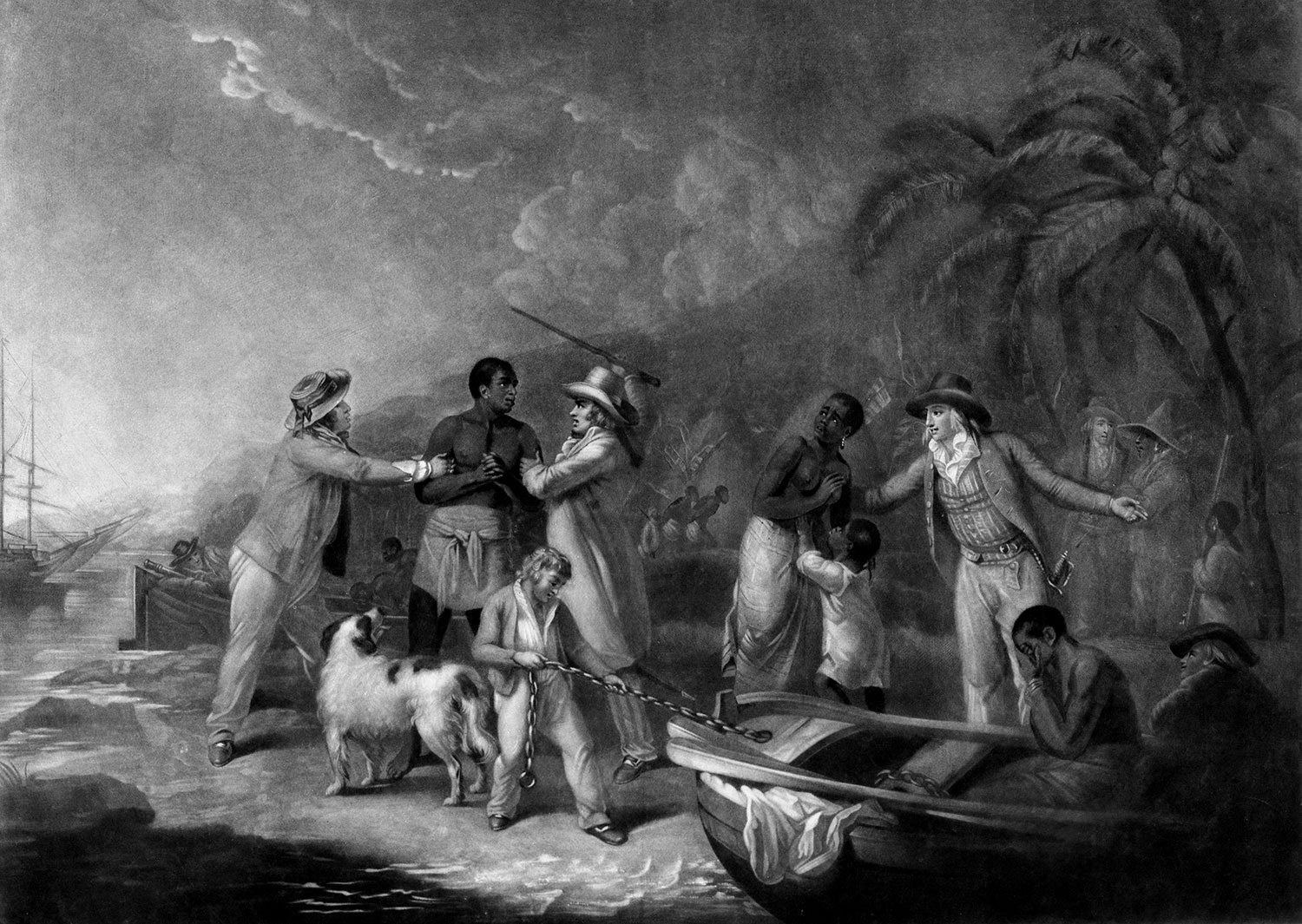
The negation of the slave family was the consequence of texts, legal codes, laws and decrees that were all behind the idea that “the slave cannot be a parent”.
Thus in the 1723 Letters Patent, the Code Noir de Bourbon (Bourbon Black Code), a number of articles treat the private lives of slaves, particularly in their family dimension. If there are so many articles focusing on this issue, it is because the challenge for the powers at that time was to control anything that might have enabled the slave to convert from being “mobile goods” to that of becoming a “human person”. Article IV excludes the slave from parentage: he or she is the son or daughter of nobody. The authority of natural parents is denied, even though, as in the early 18th century, they formed a couple that was recognised by the religious authorities. Article VIII concerns the children of slaves, who belonged to the master and over whom the parents had no legitimate authority. While the mother is mentioned as being attached to the child until he or she reaches the age of seven, no mention is made of the father. For over one century, this system was applied to the slaves on Bourbon island. In 1803, The Decaen Code, the local version of Napoleon’s civil code, reiterated this approach.
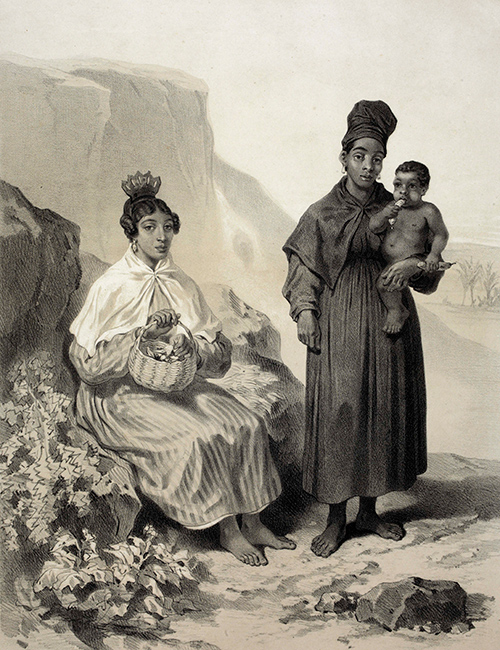
Collection of Léon Dierx art gallery
Separations between members of the slave family were the rule, sometimes occurring during the sale of slaves, but more often during changes in the master’s family: deaths, marriages, heritages and division of property. The notarial documents recording such changes enable us to declare that despite the denial of the slave family, many masters were aware of the reality of the latter and sometimes organised their inheritance to take into consideration family links between the slaves.
In the face of so many denials of the humanity of the slaves, M. Périna asserted their right to found a family:
For the slave there exists no birth, no marriage, no death […] to be precise, it is as though for slave births, marriages and deaths didn’t exist or shouldn’t exist. This is thus a negation of what obviously exists in the face of all that occurs in the universe of slavery.
In 1735, 30% of the slaves present were born on the island and very often both parents could be identified. The speculative development of coffee during this period, leading to landowners being massively dependent on the slave trade, corresponds to a total loss of identity for the slaves.
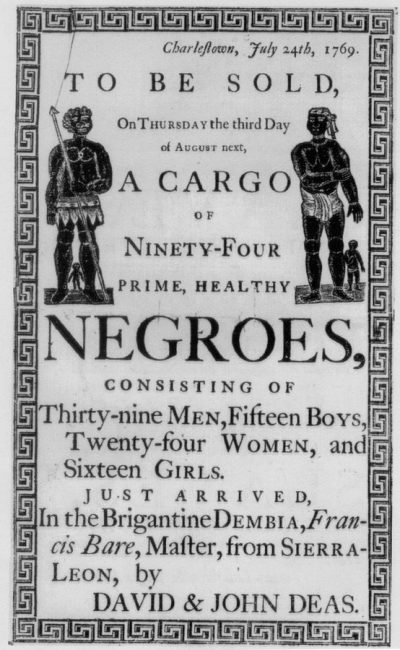
During the early decades of settlement, many couples were united through religion and in the baptismal documents the mother and often the father were regularly mentioned. During the same period, the dehumanisation of slaves was characterised by the obligation to ‘de-baptise’, in order to re-baptise in application of the criteria of the Catholic religion.
These unions, even though they were recognised, did not, however, lead to recognition of parental authority over the children, the latter continuing to belong to the masters until the age of 7-8 years. The rules more or less forbidding separation between parents and children before puberty was, more often than not, respected.
During the period between the French Revolution and the Restauration, documents recording births, marriages and deaths among the slave population are inexistent or incomplete, and it becomes more difficult to define the situation of the slave families.

It is easier to determine the situation of former slaves during this period, those emancipated by their masters and referred to as ‘Free Coloureds’. The same phenomena concerning the family structure preceding emancipation can be noted, with the same quantitative importance given to children. Studying emancipation deeds for this period leads us to note the large number of slaves who emancipated their children, their father, mother, grandparents, uncles or nieces and even those with a spiritual connection, such as godsons and goddaughters.
The newly emancipated slaves achieving the status of citizen was essentially reflected in the legalisation of existing unions and at times the legal recognition by a father of children whose mother had died before 1848.
For example, in 1849 in St Leu, two 70-year-old Creoles mentioned their ascendants, married and legally recognised five children aged between 25 and 40. One hour after their union, one of their sons was married, legally recognising three children aged between 3 and 15, all born slaves. Four generations of slaves are thus recorded in these deeds.
Between 1849 and 1860, we can note thousands of marriages leading to thousands of children being legally recognised. They all bear witness to the existence of a family life before 1848, of course taking on different forms. Cohabitation was far from the rule, as reflected in the large number of families now coming together, either in the residence of the father’s employer or that of the mother.
If we include persons living in families united by religion before 1848, the general number represents over 50,000 persons, more than 75% of the slaves.
This number, while it more or less corresponds to the number of Creole slaves, also includes a number of non-natives (Africans, Madagascans, Indians, Malays) included in the number of parents having lived in a family structure.
Malay, African or Madagascan women mostly lived within a family structure. As regards the men, due to the sex-ratio imbalance: 60 % of men for 40% of women in 1848, non-native slaves were far fewer in number in the same situation.
Reconstituting the slave families gives us an idea of the forms of family organisation present during the period of slavery. It seems that maintaining the structures existing in the country of origin was not possible partly because there was a majority of ethnic intermarriages, but also due to the social organisation inherent to slavery.
We can note that there were various types of family, depending on the owner, the number of slaves owned and the economic strategies of the masters. Sometimes, families lived on the same estate and included three or four generations. Very often, the fathers can be identified.
In other cases, members of the family were generally scattered. The male slave, father or spouse often lived on another estate belonging, however, to the same family of masters.
Even though the practice was limited by strict regulations, slaves were often moved around between properties. Accounts by priests or representatives of the civil and economic authorities show a certain tolerance by the masters as regards the night-time activities of their slaves who, once their day’s work over, did not hesitate to cover long distances to be with a person close to their heart.
On the large estates, unions were often formed between slaves belonging to the same master. For example, on the Desbassayns estate in Saint-Paul or that of Sicre de Fontbrune in Sainte-Suzanne, can be traced a number of ‘dynasties’ of slaves formed more or less over the whole period of slavery.
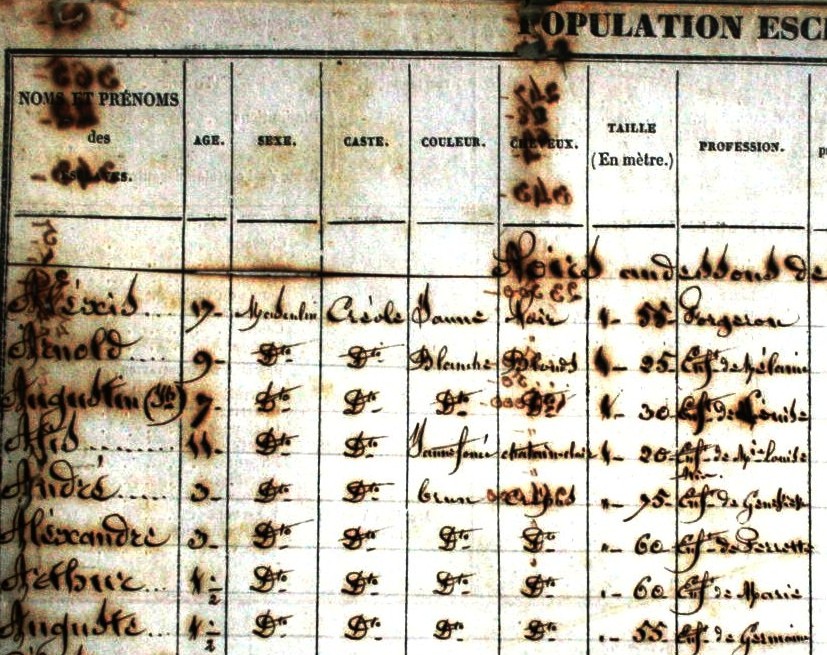
For these masters, Creole slaves were in the majority, thanks to the presence of a large number of children. We must point out that in Reunion, there are no traces of “breeding farms” of slaves having existed, as was the case in the United States.
The demography of slaves was characterised by high fertility and young motherhood. Motherhood before the age of ten was uncommon, but women often gave birth to their first child between the ages of 12 and 15. The high degree of infant mortality, which concerned mainly the slave population, but also to a lesser degree the free inhabitants, supposed a population growth that was naturally low, even though the terms themselves are not totally relevant when talking about an island permanently peopled through the constant arrival of new slaves. Life expectancy being low, the structure of slave families took on specific forms.
The frequent death of one member of a couple sometimes implied legal recognition of non-biological children and new unions similar to what we would refer to today as ‘recomposed’ families. This was the case prior to 1848, but also following abolition.
As regards the daily lives of slave families, reliable sources of information are few and far between. Living together or apart, meals were taken according to the obligations of work and chores, children under seven years of age were taken care of by the mother on small or middle-sized estates and by older persons on large estates: we can find many variations.
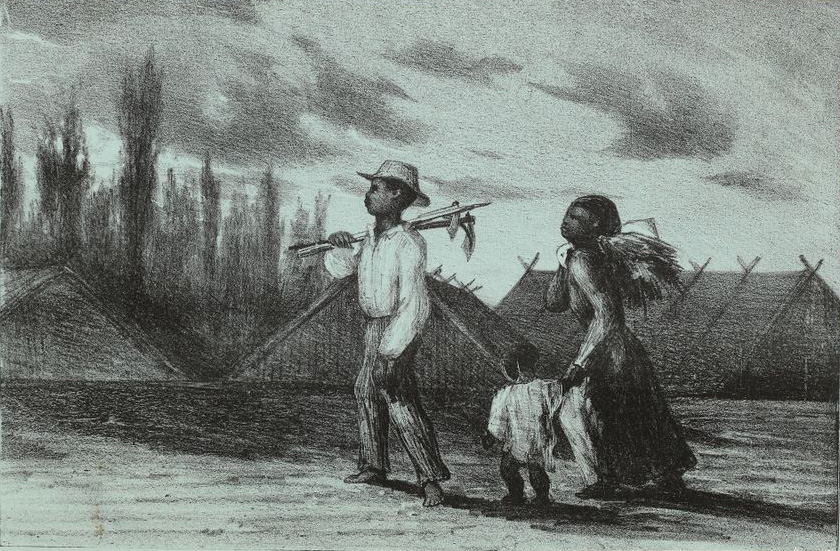
However, disease, hunger and death were frequent aspects of the daily lives of the slave families. Various accounts reflect the very strong family links existing within the servile population.
Thus, in 1844, Abbé Liberman , declared: “The blacks are very rarely unfaithful to their wives; they pay great attention to the moral values of their children and are respected and held in esteem.”
Similarly, E. Vidal emphasises that: “The Black, even though primitive and unrefined, has great respect for his parents and loved ones: he remains faithful to his companion, even though not obliged to do so by religion; he has a tender charming love for his children. ”
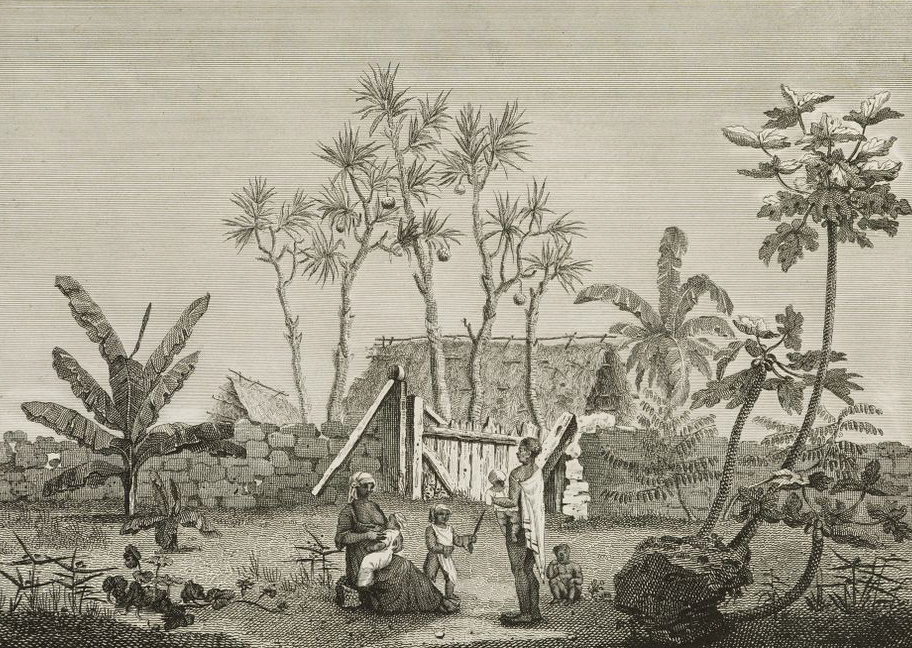
On the other hand, the structure of the slave family was also the object of criticism.
An example is the following declaration, quoted by V. Schoelcher : “The child, a sort of animal with the ability to speak, may be detached from the family at a certain age, just like a foal or a calf.”
In 1841, during the debates on the abolition of slavery, the public prosecutor Barbaroux declared that he did not see any difficulty when it came to: “Breaking family links which, in fact, are hardly understood by the slaves.”
One of the reasons put forward by the different authorities wishing to pour scorn on the forms of family organisation of the slaves was the ethnocentric confusion between religious marriage and family. They frequently pointed out the slaves’ refusal to accept unions controlled by the Church and organised by the masters. In their opinion, free union was a crime which it was appropriate to combat.
In 1842, Schoelcher further declared:
We must not come to the conclusion […] that the Blacks in the colonies live in absolute promiscuity, following no laws or order. They do not have marriage as their masters do, but they have unions with the stability of conjugal relations to which are very often applied the obligations of marriage.
Sources of information concerning relations within slave families, as seen by the slaves themselves, are extremely rare. Legal archives provide a few accounts, but these are by their very nature specific. It is difficult to form hypotheses concerning relations between men and women or parents and children. Cases of domestic violence towards women appear to have been exceptional. It seems that jealousy resulted in suicide rather than murder. There were frequent cases of slaves escaping in order to be closer to a man or woman companion. Theft of food, often stolen for the slave’s family, also occurred regularly, showing the responsibility shouldered by male slaves. Parental authority over the children was obviously in opposition to that of the masters over their slaves as a whole. There was certainly a wide range of situations.
Those who lived outside the slave family structure are not to be forgotten. This essentially concerned men, mainly Africans who did not become parents. There were many reasons behind such exclusion. First of all, the sex-ratio imbalance or the choice of non-native women, mainly ethnically exogamous, with a clear preference for Creole slaves. The victims of the slave trade were those who had the greatest difficulty overcoming the hardships of slavery. Their ‘invisibility’ was also reflected in a deceased person being identified simply by a first name, even the patronymic imposed by the colonial powers was not indicated.
The large number slave families should lead us to question the meaning to be given to such structures.
We cannot apply the traditional terminology used in the history of the nuclear or enlarged family. The complete family became nuclear or poly-nuclear as from 1848, but in Reunion the management of the inheritance that underlies the idea of the nuclear or enlarged family for a long time remained meaningless.
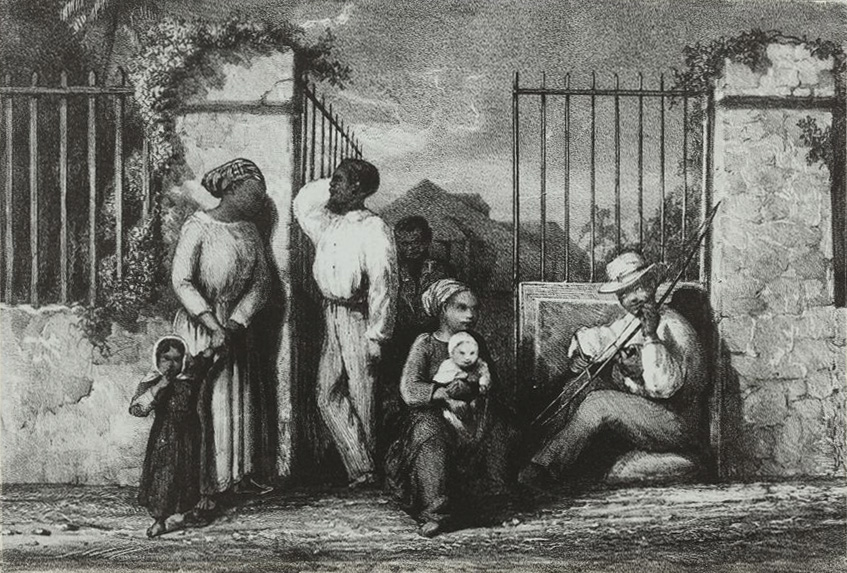
The substrata on which was constructed the Reunionese society was of great complexity. The diverse forms of family organisation, the choice of unions, the fertility of the women and the number of children they bore, as well as the different variables related to the organisation of the estates, depending on their size or the moral choices of the masters, were clearly of importance. Despite these variables, the slave family was a reality that cannot be denied. There was not one slave family but multiple slave families. Sterile or prolific, Mono-parental or more complete, comprising three or four generations, living together or scattered, legally recognised or hidden, this diversity of practices confirms the singular existence of the slave family within a system which, however, attempted to deny it.
Certain persons have interpreted these forms of family organisation as being a sign of submissiveness to the masters, when they were recognised by the Church. This is not to be excluded for a certain number of slaves, but the legal recognition of children, born before the religious union and validated by the master before 1848, but more often made official following abolition, shows that in most cases it was not simply a question of making a union official and that this had not played a role when it came to constituting a family.
It is thus appropriate to consider a different reality. We can take the example of the family of Emilie, mother to six children in 1811, four of whom were decapitated, including Elie. It is to be noted that she was imprisoned for several months and saw herself as a symbol of resistance to slavery.
Consideration of those tens of thousands of slaves who lived in family structures leads us to analyse their role as a form of resistance to slavery, more discreet than maroonage or rebellion, it is true, but which enabled slaves to survive their condition and to create the basis for the Creole society in Reunion. If they survived and left descendants, it is simply because those thousands of slaves resisted and asserted their humanity.